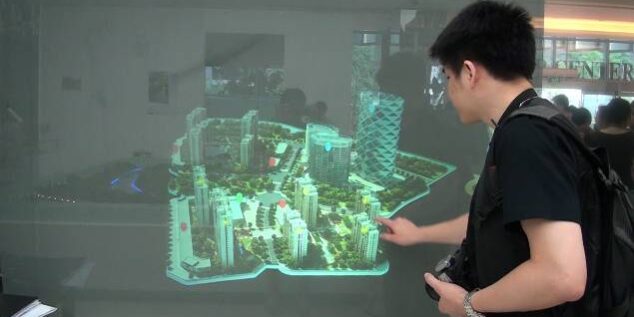As aesthetic preferences and mindsets evolve, traditional exhibition methods have become insufficient to meet people’s demands. Consequently, digital technology has permeated everyday life, bringing digital exhibition halls into the spotlight. Among the various interactive technologies in these halls, interactive projection stands out as a favorite. Here, we introduce four popular types of interactive projection in digital exhibition halls:
1. Holographic Projection
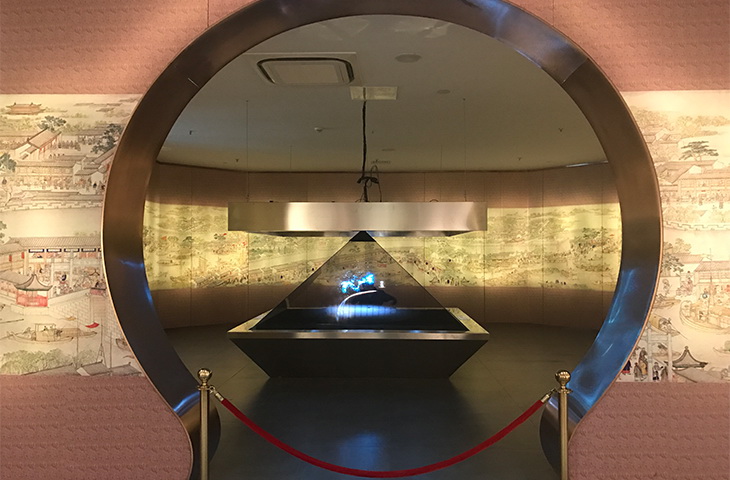
Holographic projection transforms static, flat objects into three-dimensional displays that can be viewed without 3D glasses. By incorporating interactive technology, it allows users to engage with the 3D images. The holographic interactive display system combines nano-sensing touch film and scattering rear projection imaging technology, creating a novel and extraordinary exhibition method. Visitors interact through holographic display glass, experiencing a magical and mysterious sensation. This modern and stylish interactive means enhances display queries. Specific software techniques can produce special floating image effects on glass, providing a strong visual impact. This technology enables touch interactions on the projection screen using fingers or other natural objects, allowing users to open interfaces, switch images, query information, and perform drag-and-drop controls.
2. Floor Interactive Projection
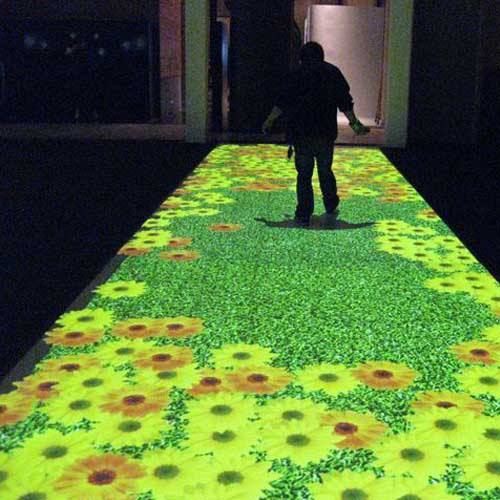
Floor interactive projection is a common and popular method where people can interact with images on the floor through movements in the projection area. It’s simple to operate and offers fun for everyone. Radar interaction captures participants’ movements using radar equipment, which are then uploaded to a phase system for analysis. The analyzed data is combined with the interactive system to create interactive effects, allowing participants to interact with wall images. Radar technology enables multi-point interaction on any display medium or surface, such as walls, floors, tables, and even non-flat or water surfaces, allowing contact or non-contact interactive operations using phase conversion and laser ranging.
3. Wall Interactive Projection
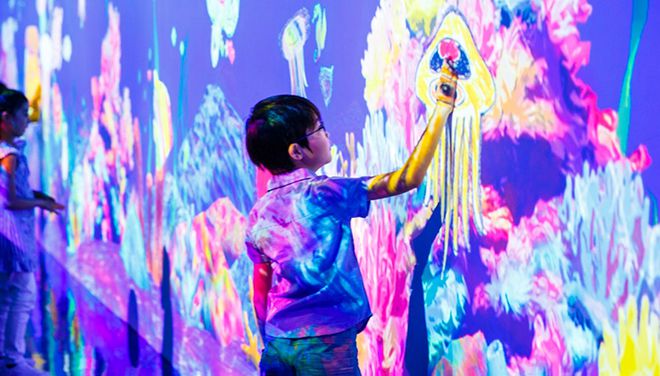
Wall interactive projection transforms plain walls into vibrant and colorful displays, where different body movements can change the images on the wall, achieving excellent interactive promotional effects. Using radar sensing, infrared sensing, and creative content design, wall interactive projection enables interaction with the audience. The projection not only displays rich graphics and videos but also incorporates interactive elements like games. Players can interact through touch or body movements, adding fun and challenge while providing diverse entertainment experiences.
4. Curved Screen Projection
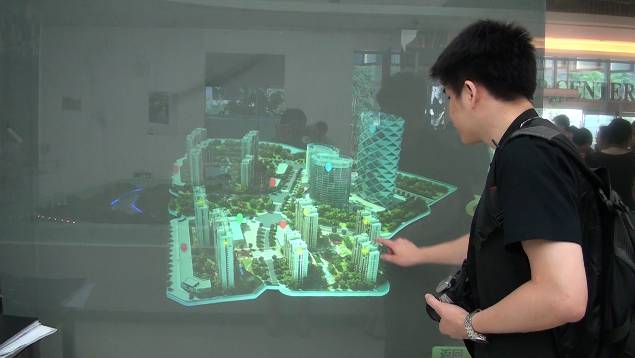
Curved screen projection, characterized by its surrounding curved hard screen, provides visitors with a highly immersive experience. The large, clear, and stunning images create a visual feast. Multi-projector images undergo grid geometric correction and blending technology to produce a seamless, complete picture. The projection fusion processor integrates multi-screen graphic splicing processors and fusion band generation devices, combining video multi-window processing and edge blending technologies. It supports video multi-window display, edge blending, edge masking, geometric correction, color correction, multi-source signal selection, and pre-stored scene recall.
Conclusion
Interactive projection technology significantly enhances digital exhibition halls by providing engaging and enjoyable experiences. Each type of interactive projection, whether holographic, floor, wall, or curved screen, offers unique ways to captivate and entertain visitors, thereby increasing foot traffic and ensuring a memorable visit.

